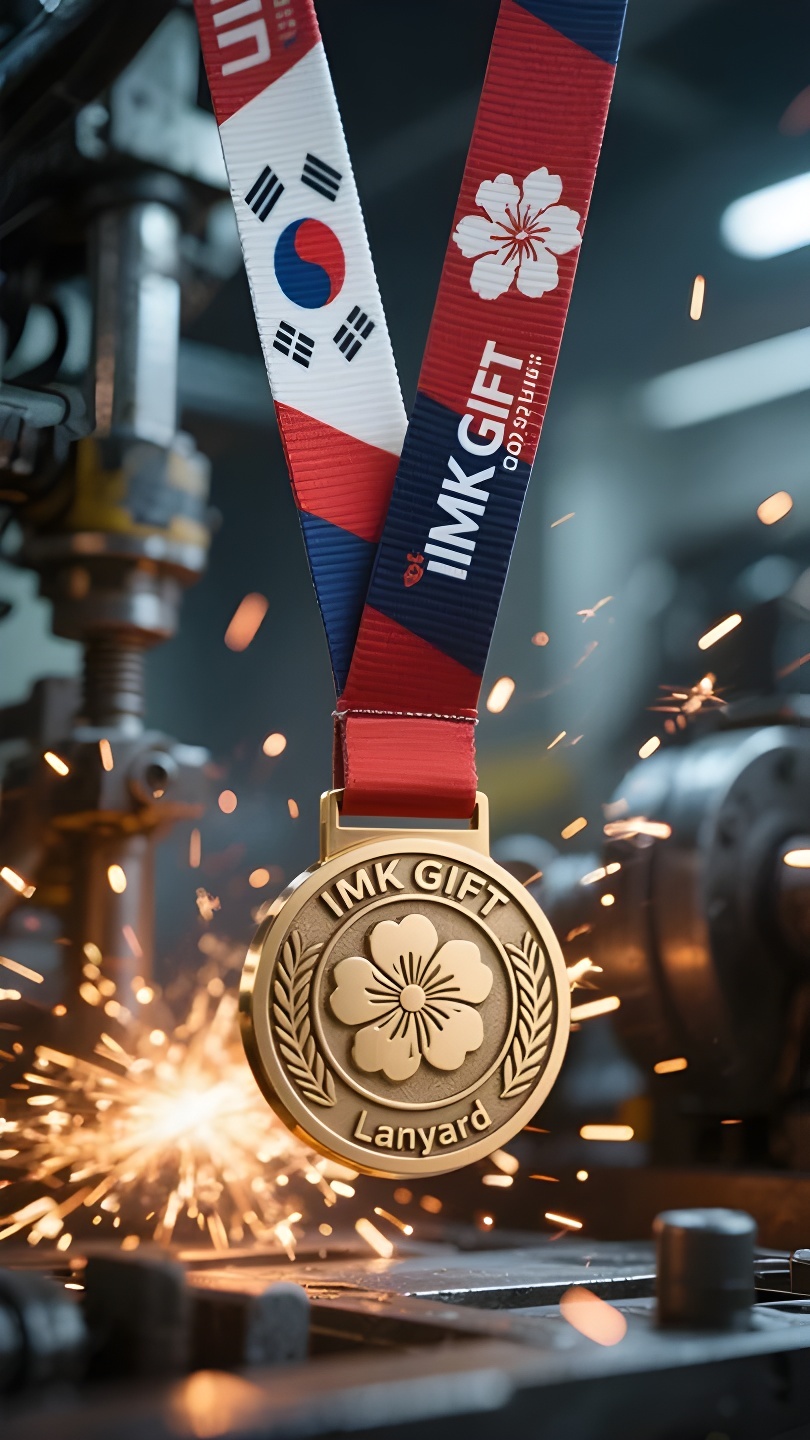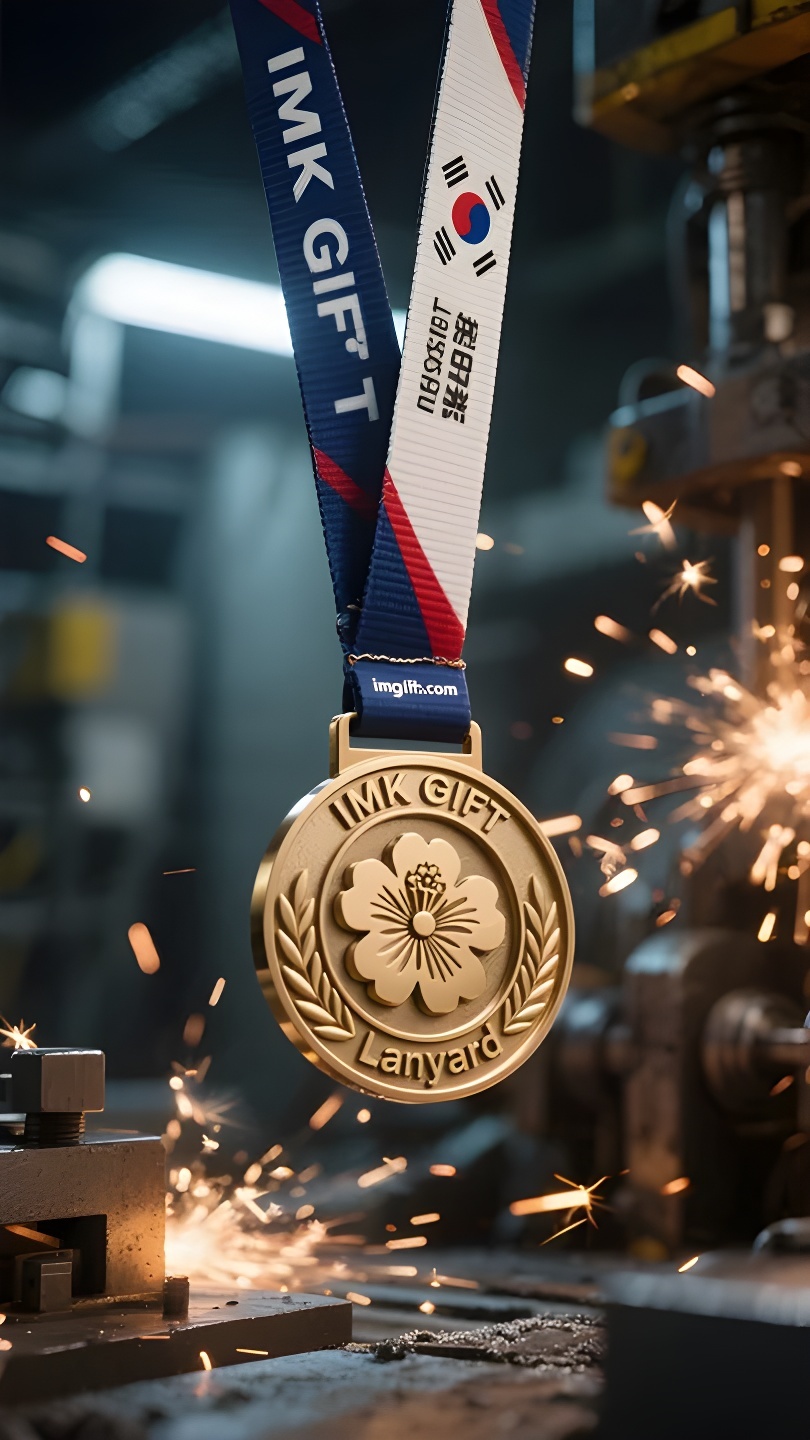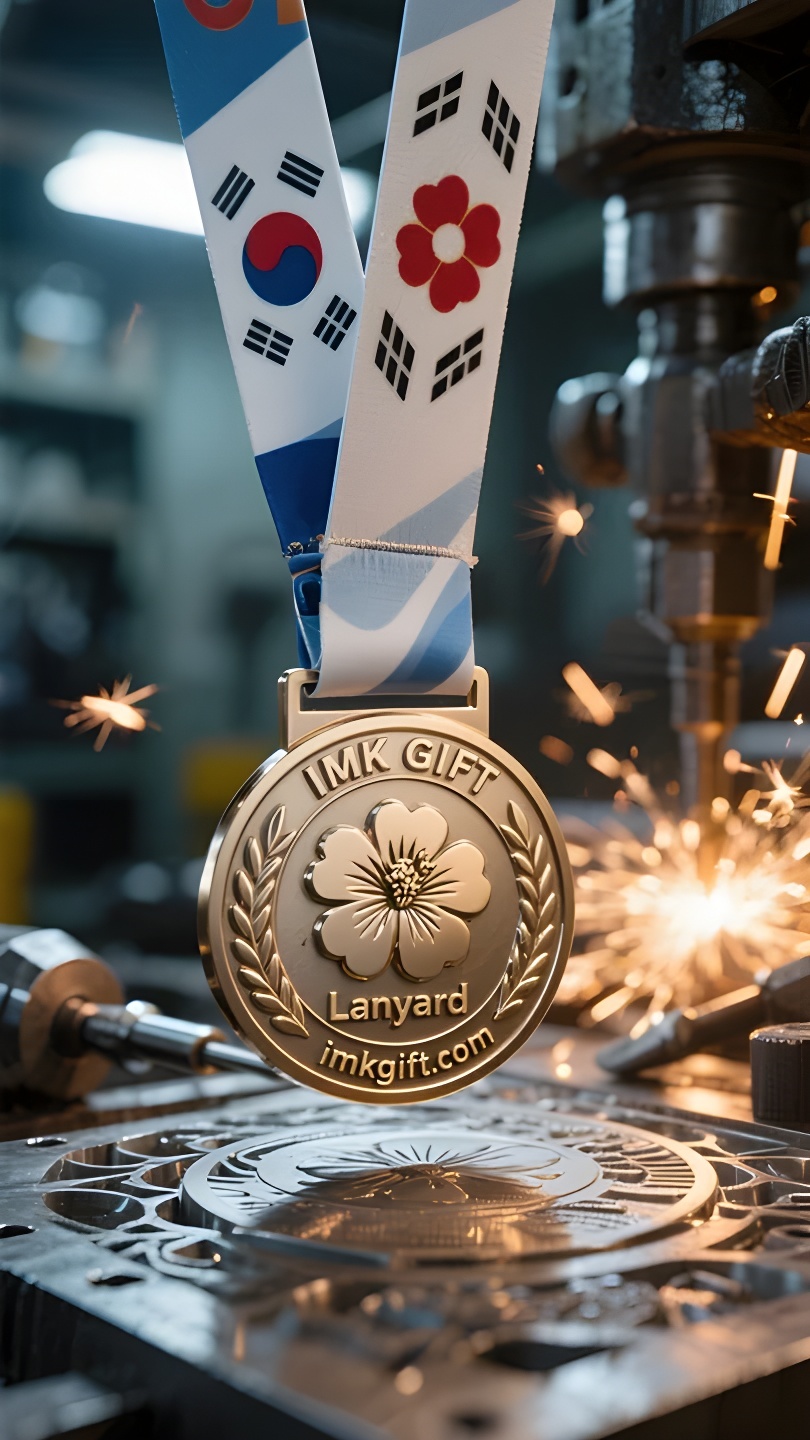in982-히비스커스-꽃이-피는-곳-영광은-영원하다
▼
8월, 광복절의 종소리 속에서 대한민국은 민족 부흥의 길을 되돌아봅니다. 태극기의 붉은색과 파란색 음양 무늬는 대립의 화합이라는 지혜를, 네 모서리의 천곤, 간리, 리 괘는 조화로운 질서를 추구하는 정신을 응축합니다. 비바람을 견뎌낸 이 깃발은 역경 속에서도 살아남고 충돌 속에서도 새롭게 태어나는 대한민국 민족정신의 축소판과 같습니다. 영원한 아름다움을 상징하는 무궁화는 명예 훈장에 새겨져 있습니다. 각 훈장의 비단 끈에는 무궁화 꽃잎이 교차하며 피어나 심오한 의미를 담고 있습니다. 비단실은 훈장의 무게뿐만 아니라 개인의 투쟁과 집단의 영광 사이의 공생적 유대감을 엮어냅니다. 우승자가 메달을 가슴에 걸 때, 그 랜야드는 순간의 영광뿐 아니라 세대를 거쳐 계승되는 책임까지 짊어집니다. 마치 무궁화가 아침에 피었다가 저녁에 졌지만 매일 새롭게 태어나듯이, 모든 영광은 새로운 여정의 시작점이 되어야 합니다. 이러한 “유연한 힘”은 한국의 근대화 과정 전반에 걸쳐 흐릅니다. 전후의 폐허에서 한강의 기적까지, 문화 수출에서 기술의 혁신까지, 무궁화의 불굴의 정신은 시대의 격류 속에서 국가의 생명줄을 이어줍니다. 국기와 무궁화가 시상대에서 서로 어우러질 때, 두 꽃은 함께 의미를 부여합니다. 진정한 영광은 찰나의 꽃이 피는 데 있는 것이 아니라, 찰나의 아름다움을 영원한 정신적 유대로 엮어내는 데 있다는 것입니다. 이것이 바로 랜야드 메달의 가장 깊은 깨달음일 것입니다. 개인의 별빛은 결국 국가적 은하계에 녹아들어 기나긴 역사의 소용돌이 속에서 영원히 빛날 것입니다.
In August, South Korea looks back on the road to national rejuvenation amid the bells of Liberation Day. The red and blue yin-yang patterns on the Taegeukgi tell the wisdom of unity of opposites; the Qiankun, Kanli and Li hexagrams on the four corners condense the pursuit of harmonious order. This flag, which has experienced wind and rain, is like a microcosm of the Korean national spirit – surviving in adversity and being reborn in collision. The hibiscus flower, which symbolizes eternal beauty, is woven into the medals of honor. On the silk lanyard of each medal, the hibiscus petals bloom in a crisscrossed posture, implying a profound meaning: the silk thread weaves not only the weight of the medal, but also the symbiotic bond between personal struggle and collective glory. When the winner wears the medal on his chest, the lanyard carries not only the glory of the moment, but also the responsibility of inheritance from generation to generation – just as the hibiscus flower blooms in the morning and falls in the evening but is reborn every day, every honor should be the starting point of a new journey. This “flexible strength” runs through the modernization process of South Korea. From the post-war ruins to the Han River miracle, from cultural exports to technological breakthroughs, it is the indomitable spirit of the hibiscus flower that keeps the nation’s lifeline flowing in the torrent of the times. When the national flag and the hibiscus flower complement each other on the podium, they jointly interpret: the true glory does not lie in the momentary bloom, but in weaving the momentary beauty into an eternal spiritual bond. This may be the deepest revelation of the lanyard medal – the individual’s starlight will eventually merge into the national galaxy and shine forever in the long scroll of history.
八月的韩国,在光复节的钟声中回望民族复兴之路。太极旗上红蓝相生的阴阳纹,诉说着对立统一的智慧;四角的乾坤坎离卦象,凝结着对和谐秩序的追求。这面历经风雨的旗帜,恰似韩国民族精神的缩影——于逆境中求存,在碰撞中新生。
而象征永恒之美的木槿花,则被编织进荣誉的挂绳奖牌中。每一枚奖牌的丝质挂绳上,木槿花瓣以经纬交错的姿态绽放,暗含着深刻寓意:丝线编织的不仅是奖牌的重量,更是个人奋斗与集体荣耀的共生纽带。当获奖者将奖牌佩于胸前,挂绳承载的不仅是当下的荣光,更是代代传承的责任——正如木槿花朝开暮落却日日新生,每一次荣誉都应成为新征途的起点。
这种”柔韧的刚强”贯穿了韩国现代化历程。从战后废墟到汉江奇迹,从文化输出到科技突围,正是木槿花般百折不挠的精神,让民族命脉在时代激流中绵延不息。当国旗与木槿花在领奖台交相辉映时,它们共同诠释着:真正的荣耀不在于瞬间的绽放,而在于将刹那芳华编织成永恒的精神纽带。这或许就是挂绳奖牌最深层的启示——个体的星光终将汇入民族银河,在历史长卷中永远闪耀。
▼
Contact Us
📞 Tel: +0086-760-85286839
📧 Email: sales3@imkgift.com








